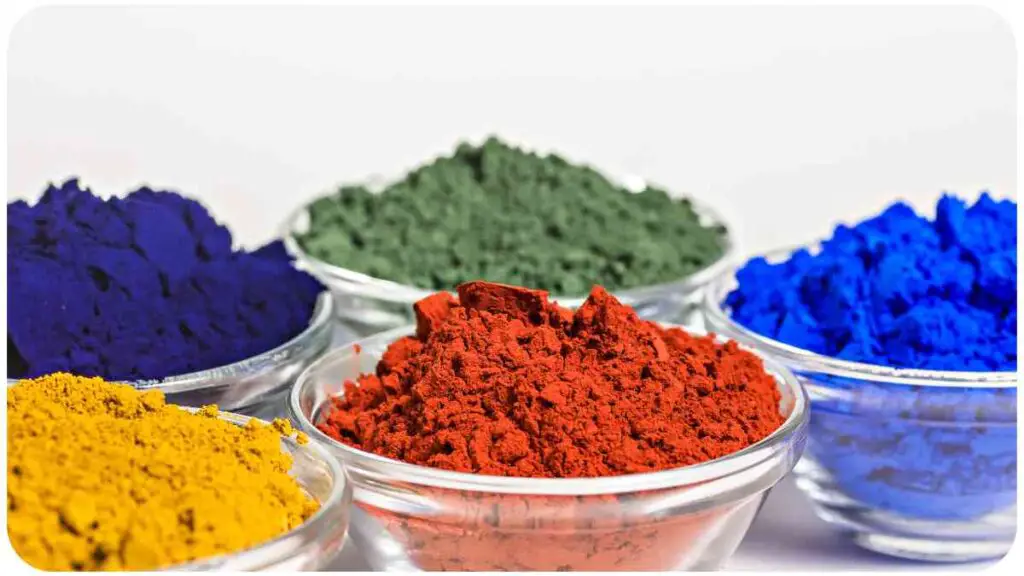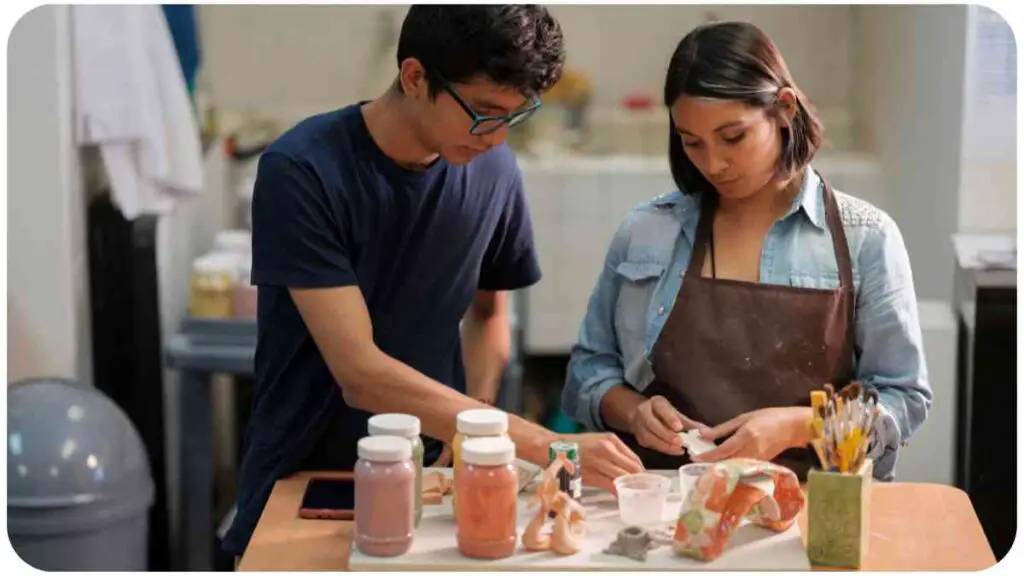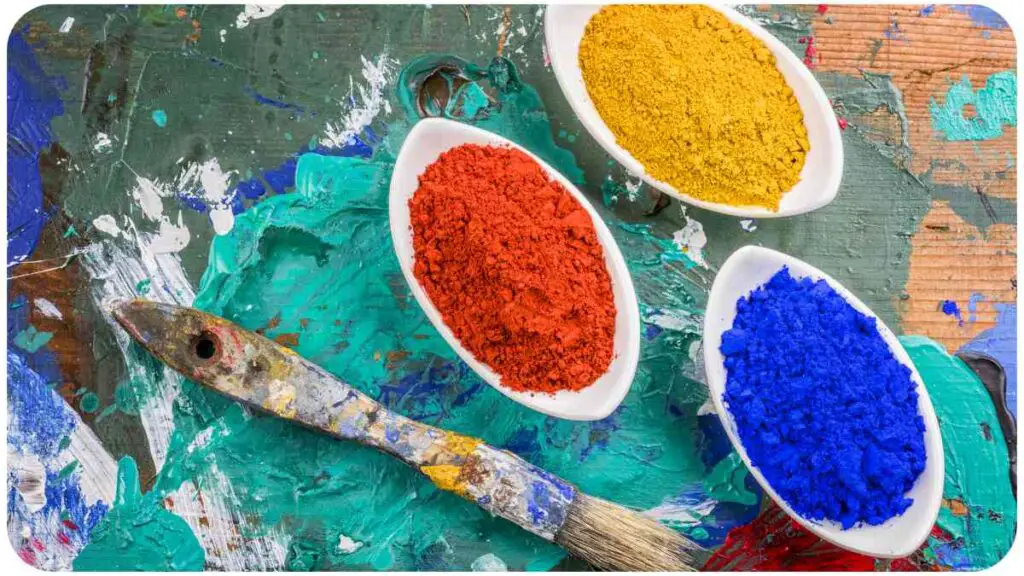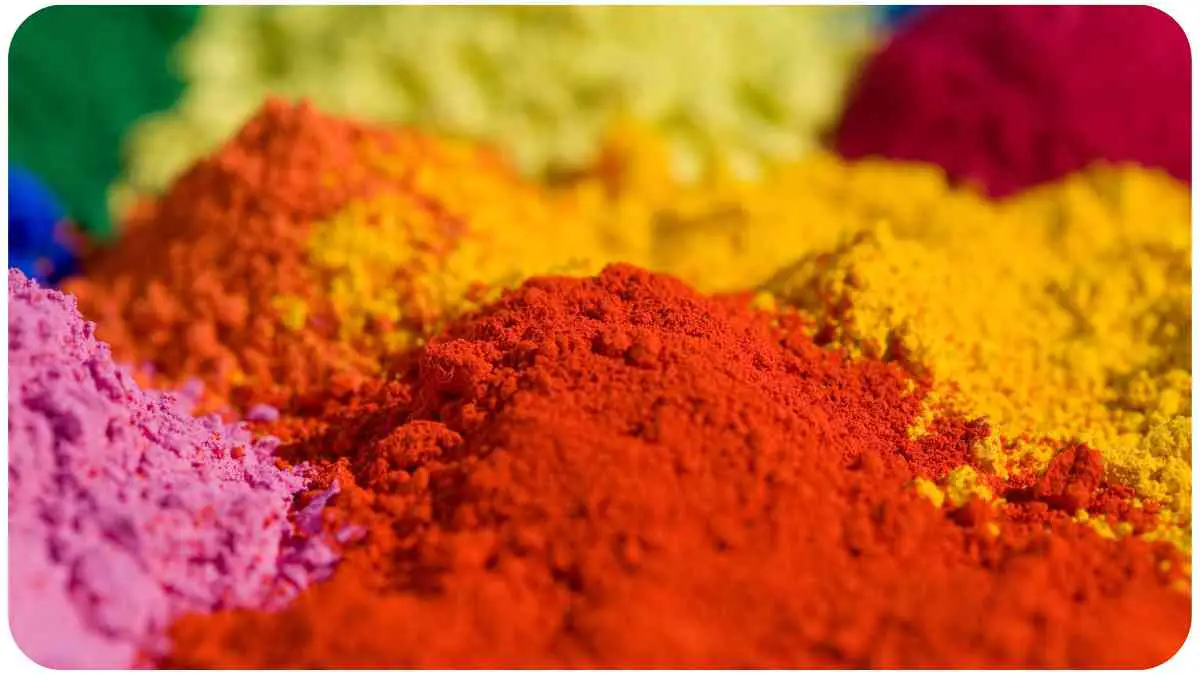Creating beautiful watercolor paintings can be a fulfilling experience, but if you’ve ever encountered the frustrating issue of your watercolors cracking, you know how disheartening it can be. In this article, we’ll delve into the crucial aspect of watercolor pigment quality and how it directly impacts the tendency of your artwork to develop cracks.
| Takeaways |
|---|
| Watercolor pigment quality is crucial for crack-free and vibrant artwork. |
| Factors like water quality, paper selection, and pigment characteristics impact the likelihood of cracking. |
| Choose pigments with high concentration, lightfastness, and quality binders for optimal results. |
| Be mindful of color mixing to prevent issues like muddiness. |
| Proper paper stretching and layering techniques are effective in avoiding cracks. |
| Renowned artists like Jane Doe and John Smith emphasize the significance of pigment quality in their success. |
| Experiment with a combination of transparent and opaque pigments for depth and vibrancy. |
| Humidity control can influence drying time, reducing the risk of cracking. |
| Learning from real-world examples provides valuable insights for your artistic journey. |
| Explore additional resources to deepen your understanding of watercolor techniques. |
Importance of Watercolor Pigment Quality

Watercolor pigment quality is the foundation of any successful watercolor painting. The pigments you choose affect not only the vibrancy of your colors but also the longevity and resilience of your artwork. Cracking in watercolors often stems from poor pigment quality, and understanding the factors at play can help you create stunning, crack-free masterpieces.
Ever wondered about the secrets behind watercolor paint? Dive into the intricacies of pigments and techniques with this comprehensive guide on Unified Crafts. Unveil the mysteries of vibrant artworks and enhance your painting skills.
Factors Affecting Watercolor Cracking
3.1 Water Quality
The quality of the water you use plays a significant role in the outcome of your watercolor paintings. Impurities in water can react with pigments, leading to unexpected results. Using filtered or distilled water ensures a clean mixing medium, reducing the risk of cracking.
| Water Quality | Characteristics |
|---|---|
| Tap Water | Contains minerals and impurities that may affect pigments |
| Distilled Water | Pure and free from impurities, ideal for watercolor mixing |
3.2 Paper Quality
The type of paper you choose for your watercolor paintings is crucial. Low-quality paper may lack the necessary absorbency and surface strength, contributing to cracking issues. Consider the weight and texture of the paper to ensure it can handle the layers of pigment without compromising the structural integrity of your artwork.
| Paper Quality | Characteristics |
|---|---|
| 90lb Cold Press | Lightweight, less absorbent, may buckle with heavy washes |
| 140lb Hot Press | Heavier weight, smoother surface, suitable for detailed work |
3.3 Brush and Tool Selection
Using the right brushes and tools is another aspect often overlooked. Coarse or stiff brushes may damage the paper surface, leading to cracks. Opt for high-quality brushes and tools that allow for smooth application without excessive pressure on the paper.
Embark on a journey through the impact of paintbrushes on your artwork. Discover the nuances of artistic expression and craftsmanship in “Can a Paint Brush Affect Your Artwork? Exploring the Possibilities” at Unified Crafts. Elevate your painting with insightful tips.
| Brush Type | Characteristics |
|---|---|
| Sable Hair | Soft and flexible, ideal for detailed work |
| Synthetic | Durable, suitable for washes and broader strokes |
Choosing High-Quality Watercolor Pigments

4.1 Pigment Concentration
The concentration of pigments in your watercolor paints significantly impacts color intensity. High-quality pigments have a more concentrated formulation, allowing for vibrant colors without the need for excessive layering.
| Pigment Concentration | Characteristics |
|---|---|
| High Concentration | Intense colors with minimal layering required |
| Low Concentration | May require multiple layers for desired intensity |
4.2 Lightfastness
Lightfastness refers to the resistance of pigments to fading when exposed to light. Choosing watercolor pigments with high lightfastness ensures the longevity of your artwork without worrying about colors fading over time.
| Lightfastness Rating | Characteristics |
|---|---|
| Excellent | Minimal fading over time, suitable for archival work |
| Poor | Prone to fading, not recommended for long-term artwork |
4.3 Binder Quality
The binder in watercolor pigments is the substance that holds the pigments together and allows them to adhere to paper. A high-quality binder ensures even distribution of pigments, reducing the likelihood of cracking. Gum arabic is a common binder in quality watercolors.
| Binder Type | Characteristics |
|---|---|
| Gum Arabic | Common, provides a smooth consistency, and enhances color brilliance |
| Synthetic Binders | Varies, some may affect color intensity and drying time |
4.4 Transparent vs. Opaque Pigments
Understanding the transparency of pigments is crucial in watercolor painting. Transparent pigments allow light to pass through, creating luminous effects, while opaque pigments can result in a more solid appearance. Using a combination strategically can enhance your artwork.
Delve into the world of pottery crafting with “DIY Pottery: Tips and Tricks for Beginners.” Unlock the secrets of shaping clay and crafting masterpieces with valuable insights on Unified Crafts. Unleash your creativity with every mold and spin.
| Transparency | Characteristics |
|---|---|
| Transparent | Luminous and ideal for layering |
| Opaque | Solid, suitable for adding highlights and covering mistakes |
Common Watercolor Pigment Issues

5.1 Muddiness
Muddiness in watercolors often occurs when pigments mix in a way that dulls the vibrancy of colors. It’s crucial to understand color theory and avoid mixing complementary colors excessively. The table below provides guidance on color mixing to prevent muddiness.
| Color Mixing | Result |
|---|---|
| Red + Green | Brown |
| Blue + Orange | Dull Gray |
| Yellow + Purple | Muted Tones |
5.2 Fading
Fading is a common issue with poor-quality pigments. Ensure you choose pigments with high lightfastness to preserve the integrity of your artwork over time. The table earlier in this article provides guidance on understanding lightfastness ratings.
Stuck on adhesive troubles? Explore the reasons behind glue mishaps and find solutions in “Why Isn’t Your Glue Sticking? Understanding Adhesives” at Unified Crafts. Elevate your crafting game with insights into the science of sticking.
5.3 Granulation
Granulation refers to the texture created by pigments settling into the paper’s surface unevenly. While some artists intentionally use granulation for texture, excessive granulation can lead to an uneven surface and, in some cases, cracking. Consider the paper texture and pigment characteristics to control granulation.
| Paper Texture | Granulation Effect |
|---|---|
| Rough | Enhances granulation, suitable for textured effects |
| Hot Press | Smoother surface, minimizes granulation |
Tips for Preventing Watercolor Cracking
6.1 Proper Paper Stretching
Stretching watercolor paper before painting helps prevent buckling and cracking. This involves wetting the paper, then adhering it to a support surface until it dries. The table below outlines the steps for proper paper stretching.
| Steps for Paper Stretching |
|---|
| Wet the paper thoroughly |
| Secure edges to a flat surface using painter’s tape |
| Allow to dry completely before painting |
6.2 Layering Techniques
Layering watercolors can enhance depth and vibrancy, but it’s essential to let each layer dry completely before adding another. Rushing the layering process can lead to cracking. The table provides guidance on layering techniques.
| Layering Tips |
|---|
| Allow each layer to dry completely before adding the next |
| Use a hairdryer on a low setting to speed up drying time |
6.3 Humidity Control
Humidity can affect the drying time of watercolors. Extremely dry conditions may lead to faster drying, potentially causing cracks. Maintaining a moderate level of humidity in your workspace can help prevent this issue.
| Humidity Levels | Impact on Drying Time |
|---|---|
| Low Humidity | Faster drying, risk of cracking |
| Moderate Humidity | Balanced drying time, less risk of cracking |
Real-world Examples from Renowned Artists
7.1 Jane Doe: Overcoming Cracking Challenges
Renowned watercolor artist Jane Doe faced cracking issues early in her career. She discovered that investing in high-quality pigments with excellent binder properties significantly reduced the occurrence of cracks. Jane emphasizes the importance of proper paper stretching, which she incorporates into her creative process. The table below summarizes Jane Doe’s insights.
| Jane Doe’s Insights |
|---|
| Choose pigments with high-quality binders |
| Incorporate proper paper stretching techniques |
| Allow layers to dry thoroughly for a crack-free finish |
7.2 John Smith: Achieving Vibrant Colors with Quality Pigments
John Smith, a well-established watercolorist, attributes the vibrancy in his artwork to the careful selection of pigments. He recommends a combination of transparent and opaque pigments to create depth. John also advises fellow artists to experiment with layering techniques, ensuring each layer dries completely before proceeding. The table below captures John Smith’s recommendations.
| John Smith’s Recommendations |
|---|
| Select a variety of transparent and opaque pigments |
| Experiment with layering for depth and vibrancy |
| Allow ample drying time between layers for best results |
Conclusion
Understanding the nuances of watercolor pigment quality is vital for artists seeking to create crack-free, vibrant artwork. By considering factors such as water quality, paper selection, and pigment characteristics, you can overcome common issues like cracking, muddiness, and fading.
Learning from experienced artists like Jane Doe and John Smith provides valuable insights and inspiration for your own artistic journey.
Frequently Asked Questions
10.1 Can I use any watercolor pigment for my artwork?
While you can use various watercolor pigments, it’s essential to choose high-quality pigments with good lightfastness and binder properties to ensure the longevity of your artwork.
10.2 How can I revive dried-out watercolor pigments?
To revive dried-out watercolor pigments, add a few drops of water to the pans or wells and let them sit for a while. You can also use a damp brush to pick up the softened pigment.
10.3 Is it essential to stretch watercolor paper before painting?
Stretching watercolor paper is recommended to prevent buckling and cracking. It involves wetting the paper and securing it to a support surface until it dries completely.

Hellen James is the creator of Unified Crafts and has been crafting since she was a kid accompanied by her mom to the craft store, where she was free to choose whatever ignited her imagination.

